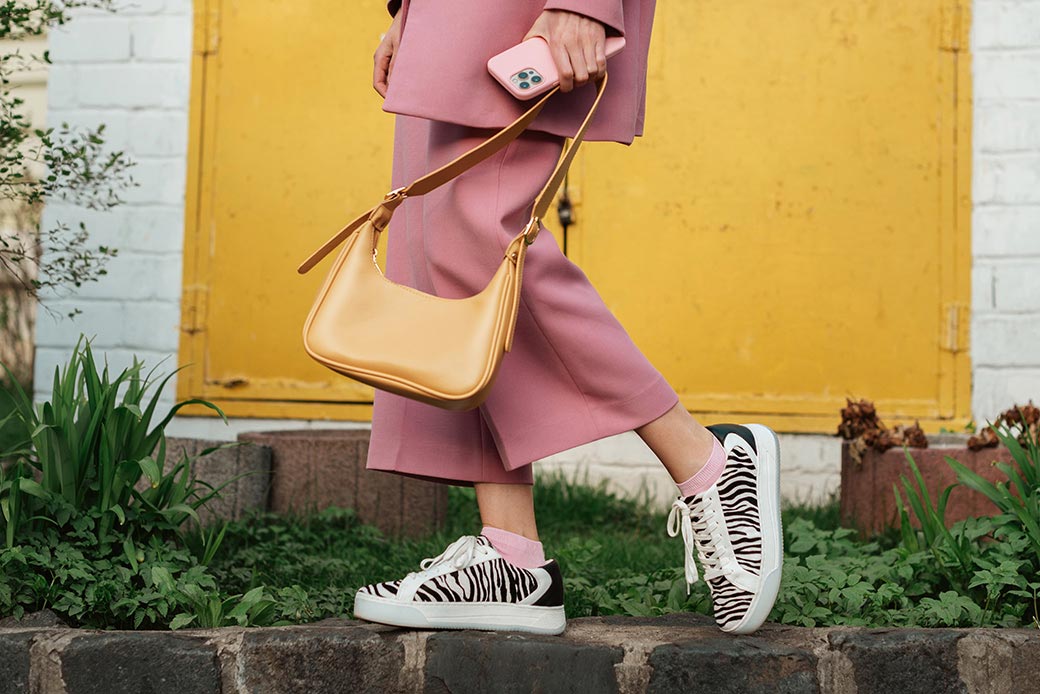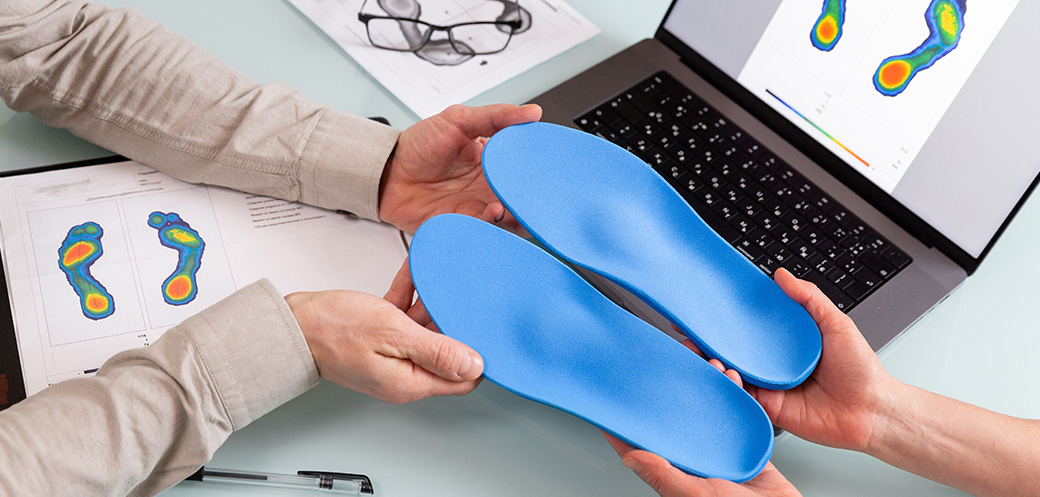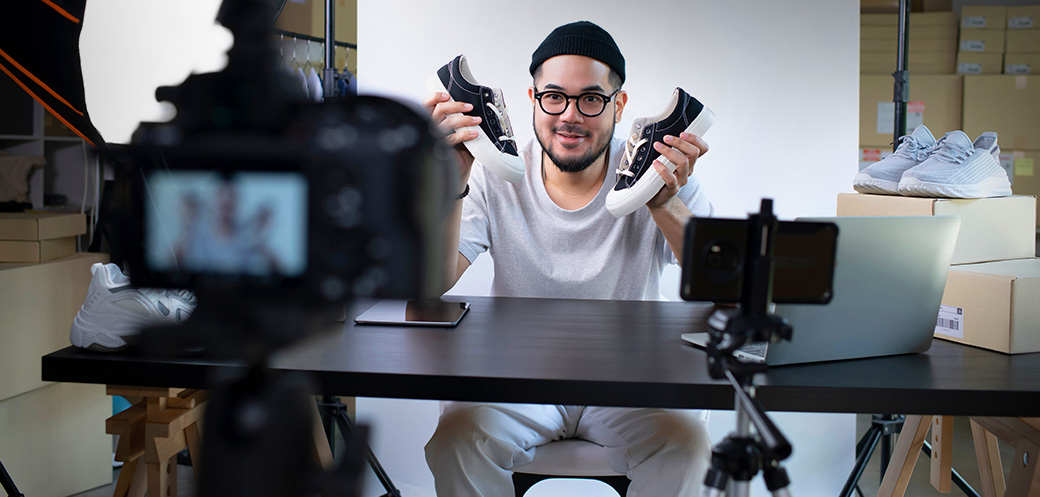The Anatomy of Footwear Cushioning
Many layers contribute to overall footwear comfort, and we’re taking apart a shoe to go inside each layer and how it helps with everything from cushioning to rebound.

Because trends are such a big part of the product development and decision-making process, it’s more obvious when brands don’t follow suit than when they do. For footwear brands especially, the consumer preferences shaping trends are a critical factor in design and development—and this “trend awareness” also applies to shoe insole suppliers.
For a while now, footwear consumers—especially younger generations—have made a major shift to adopt comfort over fashion. If you remember the days of shapeless, flat, unsupportive shoes and wonder why pairing sneakers with a dress or slacks wasn’t a “thing” then, we agree it was a missed opportunity. But as insole manufacturers, we’re thrilled that consumers are embracing comfort and support, and that footwear brands are following suit.
While comfort is a big trend, it’s not the only one shaping the insole and footwear industries. Insole and footwear innovators get it—rethinking what goes underfoot can be an easy win for brands to drive growth and impress their customers with exceptional comfort, performance, and support during any activity.
Here are some consumer trends that shoe insole suppliers and footwear brands should pay attention to:

Since COVID-19, several studies have demonstrated that consumers are increasingly more concerned with and aware of full-body health. Sure, this is a broad category that can encompass everything from making healthier food choices to investing in a full-body scan, but driving many of these choices is a growing emphasis on preventive care—which includes avoiding discomfort and potential injury from wearing improper footwear.
Consumers have become more attuned to their own bodies and biomechanical needs (i.e. if those heels are uncomfortable, they’re going right back in the box) and conversely, demand for customized insoles—especially orthotics and 3D-printed options—is growing rapidly. These insole preferences are no longer the exclusive domain of athletes or people with chronic foot issues; everyday wearers are seeking personalized support that can offer performance, comfort, and reinforce injury prevention.
This growing appetite for customization creates exciting opportunities for footwear brands to work with insole suppliers that can offer more than just a one-size-fits-all product. From modular insole systems to data-driven design tailored to foot shape and gait, customization is becoming a key differentiator in a crowded market.

Ah, the insole. It leads a somewhat unremarkable existence inside of a shoe, but is such a strategic component of footwear design that has the power to determine a consumer’s entire footwear experience. Where consumers value comfort, wellness, and purpose-driven innovation, an insole can deliver on all accounts.
Insoles are made so differently now than they were in the past, and technological developments continue to create new and improved approaches to insole materials and designs. Advanced materials and biomechanical design principles are pushing the boundaries of what insoles can do—from energy return and pressure distribution to lasting durability and rebound.
At INSITE, our approach to insole development is grounded in human-centered design and real-world data. We use plantar pressure mapping to better understand foot strike and movement, allowing us to engineer insoles that deliver optimized comfort and performance for everyday use. For footwear developers, partnering with shoe insole suppliers that take this kind of tech-forward approach means better outcomes for both the wearer and the brand.

Sustainable practices have been long implemented across industries as consumers continue to expect it as a business standard. However, as “long ago” as 2021, we wrote about what makes a product truly sustainable, addressing the common issue of “greenwashing” in which brands use terms like “eco-friendly” and “planet-positive” without providing any specifics as to what those claims are really saying. In the years since we penned that article, consumers have grown even savvier about spotting greenwashing and knowing the right specifics to look for in a brand’s manufacturing and/or business practices. Petroleum-heavy, non-recyclable materials are red flags, and insole suppliers who can deliver eco-conscious products—using bio-based, recycled, or renewable materials—are helping brands meet their ESG goals while appealing to the values of climate-conscious buyers.
While we’re on the subject…INSITE uses responsibly-sourced plant-based materials in our foams, supporting regenerative farming practices and helping reduce greenhouse gas and non-renewable energy through the use of Susterra® bio-propanediol to replace a percentage of petroleum-based BDO. Some of our other sustainable practices include using solution-dyed textiles and poured PU, but you can learn more about all of it on our website.

Social media, complete with influencers for seemingly every aspect of health and wellness, plays an enormous role in consumers’ footwear decisions. Assuming the information is sound (some of it?), it’s at least safe to say that more than ever, consumers are aware of—and concerned about—how their footwear affects their posture, joint health, and long-term mobility.
As a result, comfort and support aren’t optional. “Pain is beauty” is a buying principle that young consumers no longer support (and rightfully so). Even fashion-forward consumers are prioritizing ergonomics, which is where we get the (undeniably stylish) pairing of sneakers with dresses, suits, or other looks that would have previously demanded something more formal. Even at weddings, the footwear is often comfort-first.
For footwear designers and developers, this shift is a call to action: incorporate insoles that support healthy movement! And there are shoe insole suppliers out there prioritizing this very demand.
So, the question again: is your brand following suit?
Many layers contribute to overall footwear comfort, and we’re taking apart a shoe to go inside each layer and how it helps with everything from cushioning to rebound.
Discover the three INSITE foam insoles that each satisfy the specific needs brands have for every type of footwear design.
What’s the difference between bio-based foams and recycled foams, and how do each measure up as sustainable insole materials?